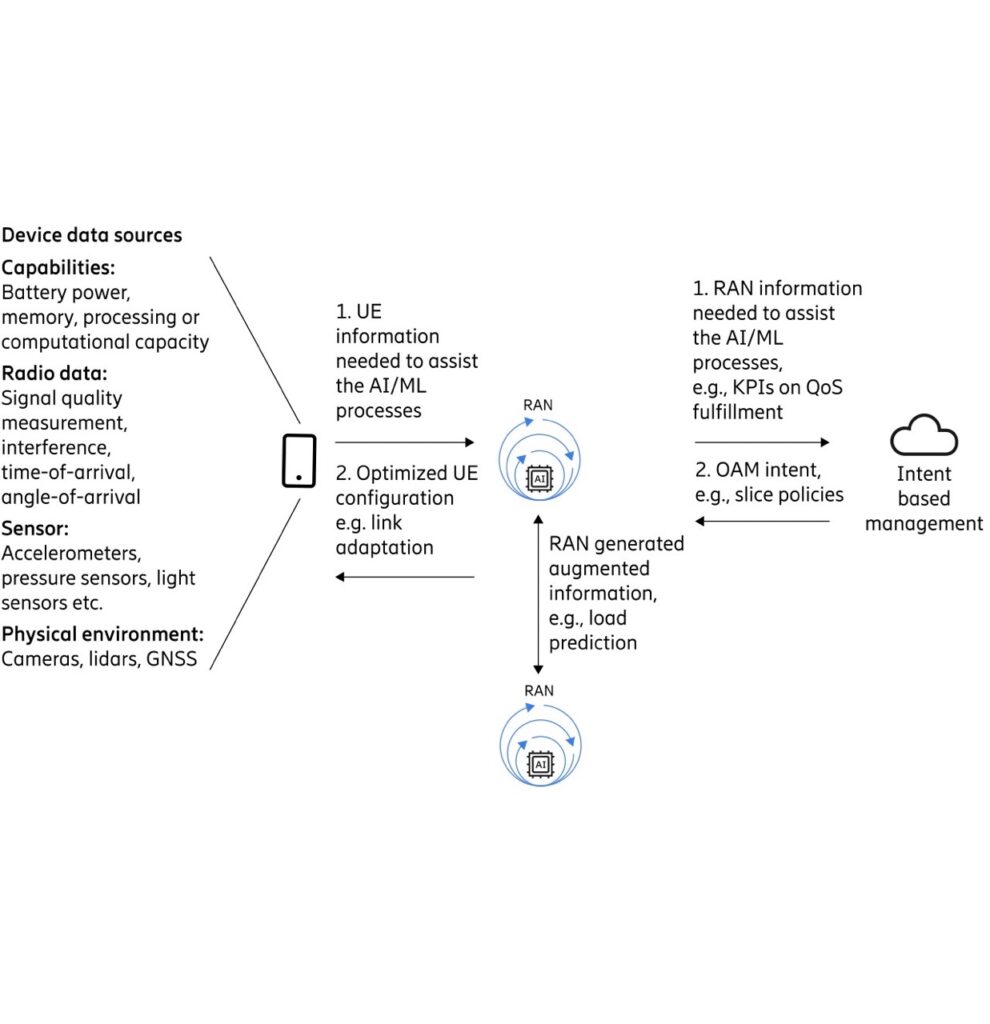AI and ML use for network energy saving, load balancing, and mobility optimization are key
3GPP Release 18 marks the first release of the 5G-Advanced standard. R16 and R17 exposed new functionality to help 5G address IoT and edge computing, enabling 5G to reach new markets. 3GPP describes 5G-Advanced as “the mid-point of 5G standardization.” With it come a host of new features and functionality aimed at delivering balanced performance across the stack, improving speed, coverage, mobility, and power efficiency. The use of Artificial Intelligence (AI) and Machine Learning (ML) play increasingly important roles in 5G-Advanced. This is highlighted by several advancements in R18, including how AI and ML will aid Radio Access Network (RAN) operation and performance.
As more carriers worldwide activate 5G Standalone (SA) networks, the scale and success of their network operations will depend on increasingly sophisticated and intricate end-to-end network automation technology. AI and ML are broadly seen as the solution to advanced 5G network automation, as a means to streamlining troubleshooting those increasingly complex Radio Access Network (RAN) operations.
3GPP has defined Next-Generation RAN (NG-RAN) architecture with an eye towards this complexity. NG-RAN logically separates signaling and data transport networks. 3GPP Release 17 provided the groundwork to study AI and ML-based solutions for helping to manage the RAN.
R18 continues those efforts with AI and ML-driven performance optimization of multi-antenna systems, for example, to address challenges associated with beam management, channel estimation and prediction. Network optimization is an area where AI and ML are expected to take a big role in R18.
“3GPP Release 18 will specify data collection enhancements and signaling support for a set of selective AI-based use cases, including network energy saving, load balancing, and mobility optimization,” said Xingquin Lin, Ericsson 3GPP senior standards engineer.
“In Rel-18, enhancement for selective use cases from Rel-17 will be taken into the normative phase – that is, efficient traffic steering and load balancing. The focus will be on enhancements to current interfaces in the existing architecture,” said Erik Ekudden, Ericsson CTO.

The 3GPP has divided the development of R18 RAN features among four Working Groups (WGs). Working Group 3, known as 3GPP RAN3, is responsible for the overall architecture of Universal Terrestrial Radio Access Network (UTRAN), Evolved UTRAN (E-UTRAN) and Next Generation RAN (NG-RAN), as well as the specification of protocols for related network interfaces.
Work items on RAN3’s agenda include specifying data collection enhancements and signaling support within existing NG-RAN interfaces, as well as the architecture for AI and ML-based network energy saving, load balancing, and mobility optimization.
R18 also lays the groundwork for future research into AI and ML use in 5G. Multivendor interoperability is a key concern going forward.
“To incentivize vendor competitiveness, one goal is to ensure that AI models remain implementation-specific,” said Ekudden.
Efforts will also be made to study new use cases for AI and ML in areas like network slicing and Quality of Experience (QoE). Standardizing machine learning for 5G both in the core and at the RAN enable new use cases, according to Qualcomm.
“For the upcoming 5G Advanced starting in Release 18, we expect machine learning features to be a key innovation vector that can expand to new and enhanced use cases, such as physical layer protocols,” Qualcomm has said.
Ultimately, the goal of AI and ML operating at the RAN is to enable the network itself to analyze, predict failure, and implement continual improvements to efficiency and performance.
“In addition to applying AI in the core and RAN (radio access network) to enable intelligent network operation (e.g., enhanced QoS, better efficiency, simplified deployment, and improved security), on-device AI can also bring benefits to the overall 5G system. The underlying enabling capability is radio awareness, which provides useful knowledge through environmental and contextual sensing that can reduce overheads and latency,” said Qualcomm.

